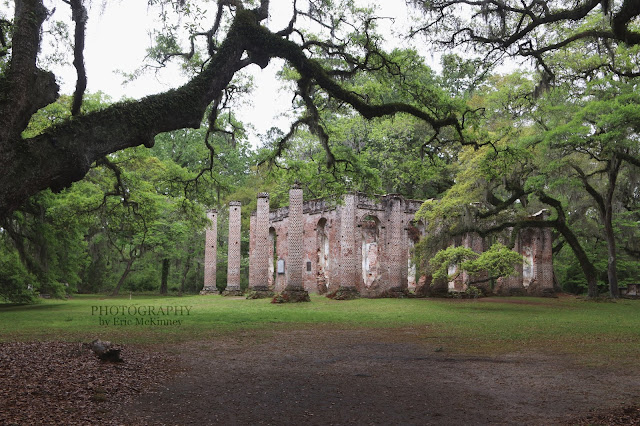Everglades National Park / Florida
It was still early morning, minutes before sunrise, when I switched on the turn signal and made a right turn onto US Highway 41, the Tamiami Trail. Within minutes, the highway began to run parallel to a canal on my right and the steadily increasing glow of the sunrise revealed multiple alligators resting along the banks on the far side of the canal.
A short drive later, I arrived at the Shark Valley entrance of Everglades National Park. The entrance gate was boarded up because of the government shutdown, and the park was open to everyone with no entry fee. Needless to say, I didn't have to show my America the Beautiful National Park Pass.
Everglades National Park is the largest subtropical wilderness in the United States, and the area is designated as a UNESCO World Heritage Site. The Native Americans once called the area Pa-hay-Okee which meant into grassy waters. Years later, author Marjory Stoneman Douglas referred to the Everglades as the River of Grass.
I rented a bike from the visitor center (a cheap $9 per hour), loaded up some water and snacks in my backpack with my camera and my zoom lens, and then I started cycling along the 15-mile loop trail.
The highlight of the Everglades, for me, is the up-close and personal encounter with the alligators.
There were no barriers separating visitors from the nature's prehistoric predators.
Many of the massive reptiles were between 8 to 12 feet in length from the sharp-toothed snout to the tip of the tail.
But here's the catch, as I was riding along the trail, the alligators were calm and docile, lazily enjoying their time in the sun and paying me no attention.
There was no feeling of being in danger.
No fear of being devoured or swallowed whole.
Riding along the trail instilled within me a respect for the alligators, the realization that they are seldom dangerous when left unprovoked. Of course, the park is quick to warn visitors to keep a safe distance of 15 to 20 feet, as well as the obvious reminder not to feed or harass the animals.
The trail also brought me extremely close to a large variety of birds, including the Anhinga, the Great Blue Heron and the Great White Egret.
A birdwatcher's paradise. The beautiful long-necked herons and egrets were mostly hunting for fish in the shallow waters, while I caught several anhingas drying off with wings outstretched.
This was my third visit to the Everglades, and I hope to have many more encounters with the wildlife in the park's remote and otherwise inaccessible habitats.
TRAVEL TIPS TO KNOW BEFORE YOU GO:
- The Shark Valley entrance of Everglades National Park opens at 8:30AM and closes at 6:00PM (during the winter months).
- The Shark Valley Loop Trail is 15 miles total, and it can be explored on foot, on bike or on a tram ride. You'll find the best experience is found when walking or riding a bike, because you can stop and go at your own pace; the tram makes minimal short stops and provides less time and limited opportunity for photography.
- Bike rentals must be returned by 5:00 PM, so be sure to arrive with plenty of time to explore the trail so that you're not rushed.
- Sunscreen is a must, as the trail is in open sunlight with little to no shade.
- Take plenty of water to stay hydrated.

























Comments
Post a Comment